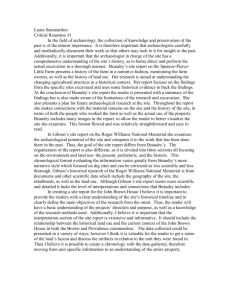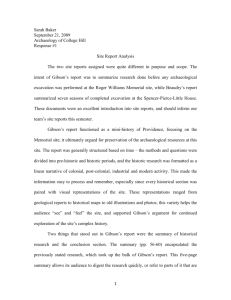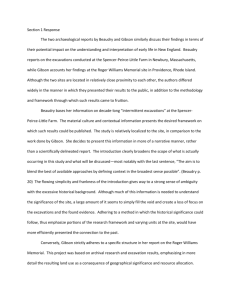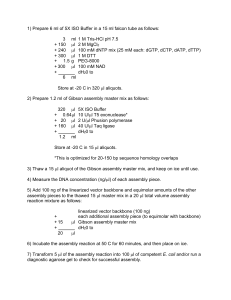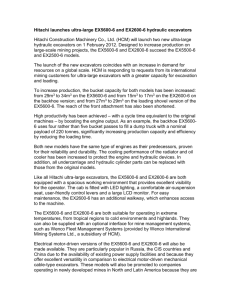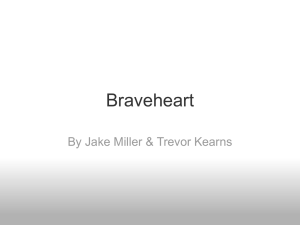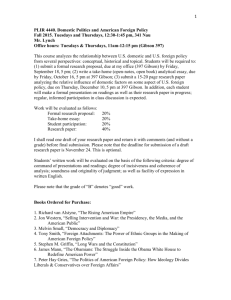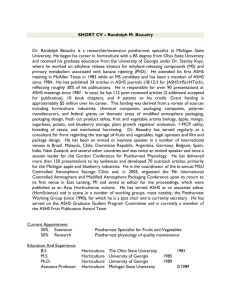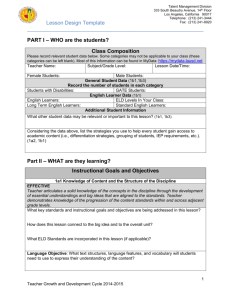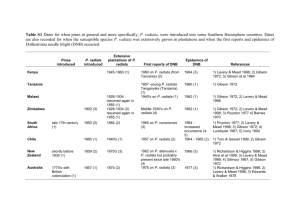Section 1 Response
advertisement
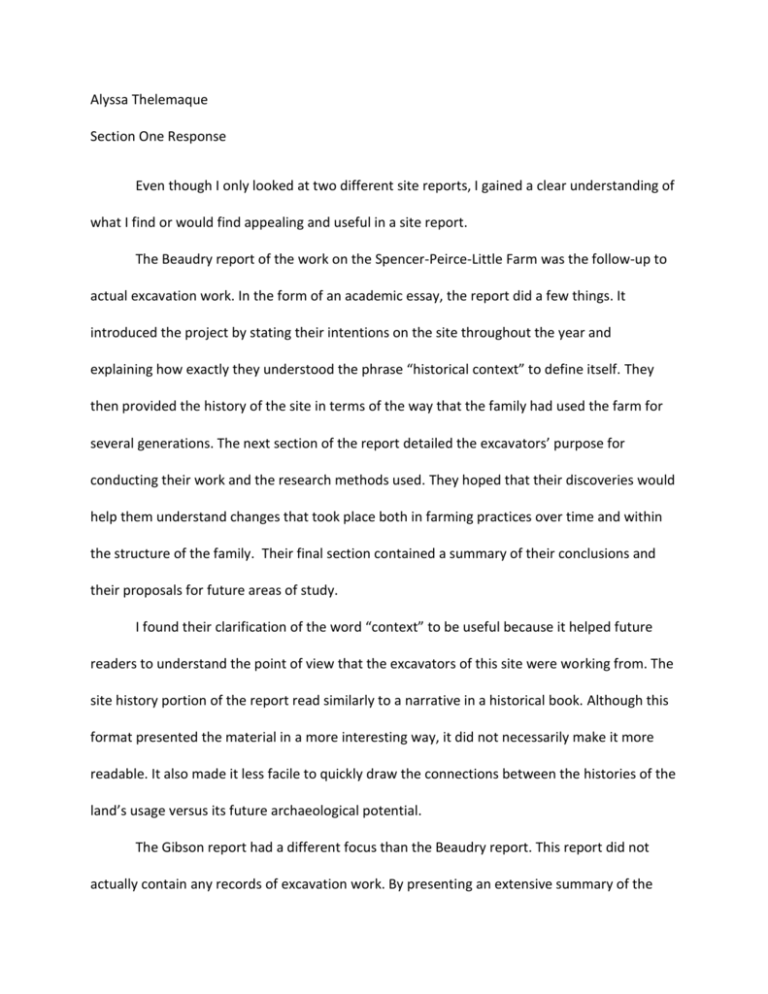
Alyssa Thelemaque Section One Response Even though I only looked at two different site reports, I gained a clear understanding of what I find or would find appealing and useful in a site report. The Beaudry report of the work on the Spencer-Peirce-Little Farm was the follow-up to actual excavation work. In the form of an academic essay, the report did a few things. It introduced the project by stating their intentions on the site throughout the year and explaining how exactly they understood the phrase “historical context” to define itself. They then provided the history of the site in terms of the way that the family had used the farm for several generations. The next section of the report detailed the excavators’ purpose for conducting their work and the research methods used. They hoped that their discoveries would help them understand changes that took place both in farming practices over time and within the structure of the family. Their final section contained a summary of their conclusions and their proposals for future areas of study. I found their clarification of the word “context” to be useful because it helped future readers to understand the point of view that the excavators of this site were working from. The site history portion of the report read similarly to a narrative in a historical book. Although this format presented the material in a more interesting way, it did not necessarily make it more readable. It also made it less facile to quickly draw the connections between the histories of the land’s usage versus its future archaeological potential. The Gibson report had a different focus than the Beaudry report. This report did not actually contain any records of excavation work. By presenting an extensive summary of the present land use (topography, climate, vegetation, surface geology, and hydrology), prehistoric land use, historic land use, and known sites of interesting occurrences, this report was like a combination of proposals and justifications for archaeological work, recommendations for ways to proceed, and an explanation of the research potential contained on the site. Their proposed areas of concentrated focus are the areas slated for consumer development. I think that the researchers provided a strong justification for their proposed work. They used a wide variety of sources to construct their history of the area. As a reader, I felt that their ample range of sources and provision of an expansive history helped me to connect with the site. Knowing even just a few details of what types of events had occurred and the history that was contained at the site gave me a small portion of the passion that the excavators probably felt for uncovering more. Their objective but well-organized report did a good job in swaying the reader to side with their cause. Although focused on different aspects of the excavation process, I found the Gibson report to be much more organized and well-presented, and I think that the Beaudry report could have benefited from following its structure. The fact that the Beaudry report read like an essay made it harder for me to quickly pick out the archaeological value in its content and navigate and mentally chronologically order events. From its table of contents to its visual aspects (font/spacing/page layout), the Gibson report had a clear and easy-to-follow format. I also liked that the Gibson report had a section detailing the present condition of the land in the area allowing the reader to make their own comparisons between the conditions of the past and present. The Gibson report was only a preliminary proposal versus a summary of the work done over 30 years. That difference may have accounted for the fact that it was much more detailed, but I wish that the Beaudry report was more comprehensive and easy to read. I would like my site report to be structured similarly to the Gibson report. In addition to details of the work that we will be doing over the semester, I would want to include as much as possible about the history of our entire site, the state of the site before we begin any real work, and details of what the excavators accomplished over the past semesters. I would also include lots of visuals in my report. That would entail any relevant historical images (blueprint/original site layout/topography etc.), pictures of excavators on the site working, snapshots of tools and data sheets, and any other applicable images. While the work we are doing is much more comparable to the work done on the Beaudry site, I would much rather follow the format of the Gibson report with the of course added elements of details on our actual work followed by a summary of how our findings can be interpreted.
